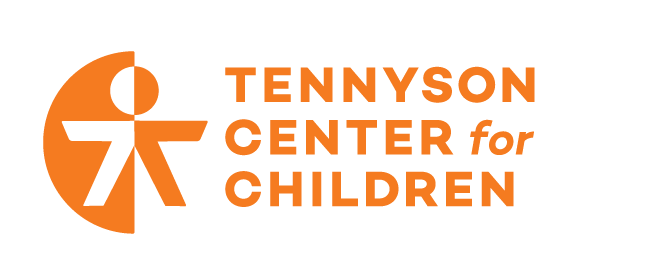In Pursuit of Wellbeing: Thriving Kids Need Strong Families and Strong Communities
One of the most confounding aspects of working in child welfare is the simplicity of the premise: in order to thrive, kids – all kids – need strong families, and strong families need strong communities. It’s simple and self-evident.
As a mom of two, I know it. As a daughter, I know it. We all deeply, viscerally know it. It’s the instinct that drives us from our first breath to seek attachment and, as adults, to comfort a distressed child. And we all also know – instinctually– that for our communities to be strong, we need strong families and thriving children.
Despite a concept like “strong families” being intuitively understood, the work needed to make the concept real is in no way easy. Simple, not easy. This is, in part, because society hasn’t taken seriously the need for a system to ensure this. Child neglect and abuse – just one metric for how well society is serving children and families – provides clear evidence that something essential is missing within the systems that interact with children and families.
For a variety of reasons, the child welfare system has carried the weight of child neglect and abuse. The child welfare system has been held accountable when maltreatment rates increase, even while it has been equipped with precious few tools for prevention. National data consistently shows that while billions of dollars are directed to the child welfare system each year, very few of those are invested in supporting children and families before child maltreatment occurs. Further, the funding that shapes the child welfare system disproportionately resources those interventions that can only ever happen after trauma occurs. The same interventions disproportionately tear apart families of color.
Many of the systems we have in our country are tied in some way to legal protections or guarantees. When it comes to guaranteeing children rights, all of the United Nations member states have ratified the United Nations Convention on the Rights of the Child – all but the United States. To the extent that the United States has declined to endorse that children have a right to wellbeing,[1] it makes sense that we lack an explicit system for ensuring wellbeing.
Such a system would promote wellbeing for all children and families such that, for example, kids are sheltered, healthy, and well-nourished and have secure attachments, basic material goods, and hope. Such a system would prevent poor outcomes for those families dealing with an absence of protective factors, or an increase in risk factors, or some imbalance of the two and, when families experience trauma, the system would support their healing and restoration.
In the absence of such a system, child welfare ends up functioning as the last line of defense, catching kids and families who society has failed – whose needs could have been better met before maltreatment ever occurred, in less-invasive and less-costly ways. Those working in child welfare feel this in their bones, much like we all feel the need for “strong families” so deeply. Child welfare leaders desperately want to get upstream and prevent more kids and families from coming to their door. At the same time, they can’t – morally or legally – turn away from the kids and families already in the system. There’s a sense of being held hostage by a system that none of us want and that perpetuates itself.
All of that said, I’ve been heartened by the growing unanimity around the need for changes to the child welfare system.
For better and for worse, child welfare has been part of my identity since I was a child – it is my life’s work and I am fortunate to have spent many years, alongside amazing people, working on system reform at the national level and now, for several years, in Colorado. I am, by nature, a weaver and connector and I have been delighted to see common themes popping up across the country, across segments of the field and extending into adjacent ones like early childhood.
These themes include the following: recognition of child maltreatment as a public health issue as opposed to an individual failing; greater understanding of and appreciation for the role of social determinants of health in so many aspects of life – economic stability, for example, supports the ability to do everything from purchasing healthy food to securing safe housing to maintaining reliable transportation to needed healthcare; and, acknowledgement that removing a child from their home is – even when necessary – traumatic.
COVID-19 brought these themes into sharper relief, making millions of kids and families suddenly “at-risk.” Conditions beyond their control have many families fraying under the stress of unanswerable questions: how will they manage financially? will they be able to acquire basic needs? and will the healthcare system be able to serve them in their time of need?
It’s tempting to believe that becoming “at-risk” only happens to others. COVID-19 has proven otherwise.
Additionally, the death of George Floyd and the subsequent calls for police reform and examination of racism in America have prompted renewed scrutiny of the child welfare system through new lenses focused on ending racism and oppression.. As we have long known – thanks to incredible advocates, scholars and families – the racist origins of and the ongoing disproportionate disruption of families of color by the child welfare system are undeniable.
There is no debate: the child welfare system needs to change.
But to what and how?
In my mind, the child and family wellbeing system will borrow and improve upon the very best – be that programs, infrastructure, financing mechanisms, or something else – from many child- and family- serving systems and from many sectors.
Crucially, the system will be accountable and responsive to communities. It will be of the community and by the community, data-driven and unapologetic about the reality that parenting is hard. That adulting is hard. This system isn’t something that’s only needed in some communities – those that, over time, we have labeled vulnerable, high-need, at-risk, or poor. That clunky and oppressive language reflects the absurdity of trying to pin the need for connection and support on just one subset of people or certain communities – for example, those living in poverty. We all need supports and resources along the way.
And so I encourage us, as a field, to engage in some honest self-reflection. What are the best parts of ourselves and the child welfare system that we can offer up in support of a new system of child and family wellbeing? A system that isn’t governed and administered by child welfare as we know it, and that is so much bigger than just child protection. What are the strengths that we lend to this effort? What are the parts of our current system, our history, and sometimes our own work that we actively denounce and work to dismantle? Let us always bring it back to the simple symbiotic relationship between children, families, and communities. Let us be relentless in holding ourselves and policymakers accountable for ensuring that all children thrive. Let us use whatever privilege we have to demand change and to share power. Let us also be clear in our call for a new kind of system – not a growth of child welfare – that has been absent for too long.
This is big work and it will take time. There is so much good to build off of and innovations underway across the country to learn from and with. I’m grateful to work alongside amazing people and to be part of shared efforts. At the same time, the work must also be personal. For me, part of that means looking to my own two kids – nine and almost seven – as my compass. I know that for them to thrive, they need more than just healthcare or just education or just safety, they need all of those things and more to thrive. Just as I try every day to make sure “my babies” needs are met, as I engage in efforts to advance child and family wellbeing, I hold that same expectation – of thriving – for all kids.
[1] The United States has elected not to ratify the UN Convention on the Rights of the Child https://www.ohchr.org/EN/ProfessionalInterest/Pages/CRC.aspx
Author: Tiffany Perrin, Accelerator Chief, Tennyson Center for Children






